Superpixel Segmentation of Hyperspectral Images Based on Entropy and Mutual Information
Abstract
1. Introduction
- (1)
- The information measures theory, including entropy, mutual information, and normalized mutual information, was applied to superpixel segmentation for HSIs. When information measures were used in the superpixel segmentation, CMF was applied to HSIs at the same time. The combination of both information measures and CMF achieved dimensionality reduction of hyperspectral images. Thus, the superpixel segmentation based on information measures is different from the existing spectral band selection methods based on information measures.
- (2)
- As one of the most innovative and effective methods, superpixel segmentation based on color histogram driving and hill climbing optimization was used to segment the false color image obtained in previous steps.
2. Dimensionality Reduction of HSIs Based on Information Measures
2.1. Preliminary Selection of Spectral Bands Based on Entropy and Color Matching Function
2.2. Band Selection Algorithm Based on Mutual Information
3. Superpixel Segmentation Based on Color Histogram Driving
3.1. Metric Function of Color Uniformity
3.2. Superpixel Segmentation Algorithm Based on Hill Climbing Optimization
4. Experiments and Analyses
4.1. Parameters Selection Experiments
4.1.1. Number of Selected Bands
4.1.2. Threshold Parameter
4.1.3. Window Size
4.2. Comparison Experiments
4.2.1. Experiment Using Indian Pines Dataset
4.2.2. Experiment Using PaviaC Dataset
5. Conclusions
Author Contributions
Funding
Conflicts of Interest
References
- Fauvel, M.; Tarabalka, Y.; Benediktsson, J.A.; Chanussot, J.; Tilton, J.C. Advances in spectral-spatial classification of hyperspectral images. Proc. IEEE 2012, 101, 652–675. [Google Scholar] [CrossRef]
- Yang, H.; Du, Q.; Su, H.; Sheng, Y. An efficient method for supervised hyperspectral band selection. IEEE Geosci. Remote Sens. Lett. 2010, 8, 138–142. [Google Scholar] [CrossRef]
- Martínez-Usó, A.; Pla, F.; García-Sevilla, P. Automatic band selection in multispectral images using mutual information-based clustering. In Proceedings of the Iberoamerican Congress on Pattern Recognition, Cancun, Mexico, 14–17 November 2006; pp. 644–654. [Google Scholar]
- Wang, B.; Wang, X.; Chen, Z. Spatial mutual information based hyperspectral band selection for classification. Sci. World J. 2015, 2015. [Google Scholar] [CrossRef]
- Kwarteng, P.; Chavez, A. Extracting spectral contrast in Landsat Thematic Mapper image data using selective principal component analysis. Photogramm. Eng. Remote Sens. 1989, 55, 339–348. [Google Scholar]
- Wang, L.; Jia, X.P.; Zhang, Y. A novel geometry-based feature-selection technique for hyperspectral imagery. IEEE Geosci. Remote Sens. Lett. 2007, 4, 171–175. [Google Scholar] [CrossRef]
- Chen, Y.; Nasrabadi, N.M.; Tran, T.D. Sparsity-based classification of hyperspectral imagery. Geosci. Remote Sens. Symp. IEEE 2010. [Google Scholar] [CrossRef]
- Jacobson, N.P.; Gupta, M.R. Design goals and solutions for display of hyperspectral images. IEEE Trans. Geosci. Remote Sens. 2005, 43, 2684–2692. [Google Scholar] [CrossRef]
- Acito, N.; Corsini, G.; Diani, M. An unsupervised algorithm for hyperspectral image segmentation based on the Gaussian mixture model. In Proceedings of the IEEE International Geoscience and Remote Sensing Symposium, Toulouse, France, 21–25 July 2003. [Google Scholar] [CrossRef]
- Veganzones, M.A.; Tochon, G.; Dalla-Mura, M.; Plaza, A.J.; Chanussot, J. Hyperspectral image segmentation using a new spectral unmixing-based binary partition tree representation. IEEE Trans. Image Process. 2014, 23, 74–89. [Google Scholar] [CrossRef] [PubMed]
- Rundo, L.; Tangherloni, A.; Cazzaniga, P.; Nobile, M.S.; Russo, G.; Gilardi, M.C.; Militello, C.; Vitabile, S.; Mauri, G.; Besozzi, D. A novel framework for MR image segmentation and quantification by using MedGA. Comput. Methods Programs Biomed. 2019, 176, 159–172. [Google Scholar] [CrossRef] [PubMed]
- Jiayin, L.; Zhenmin, T.; Ying, C.; Guoxing, W. Local competition-based superpixel segmentation algorithm in remote sensing. Sensors 2017, 17. [Google Scholar] [CrossRef]
- Ren, X.; Malik, J. Learning a classification model for segmentation. ICCV 2003, 1, 10–17. [Google Scholar] [CrossRef]
- Liu, M.Y.; Tuzel, O.; Ramalingam, S.; Chellappa, S. Entropy rate superpixel segmentation. Comput. Vis. Pattern Recognit. 2011. [Google Scholar] [CrossRef]
- Bergh, M.V.D.; Boix, X.; Roig, G.; Capitani, B.D.; Gool, L.V. SEEDS: Superpixels Extracted via Energy-Driven Sampling. In European Conference on Computer Vision; Springer: Berlin/Heidelberg, Germany, 2012. [Google Scholar] [CrossRef]
- Zhang, X.; Chew, S.E.; Xu, Z.; Cahill, N.D. SLIC superpixels for efficient graph-based dimensionality reduction of hyperspectral imagery. SPIE 2015. [Google Scholar] [CrossRef]
- Xu, Q.; Fu, P.; Sun, Q.; Wang, T. A Fast Region Growing Based Superpixel Segmentation for Hyperspectral Image Classification. In Proceedings of the Chinese Conference on Pattern Recognition and Computer Vision (PRCV); Springer: Cham, Switzerland, 2019. [Google Scholar] [CrossRef]
- Rundo, L.; Militello, C.; Vitabile, S.; Casarino, C.; Russo, G.; Midiri, M.; Gilardi, M.C. Combining split-and-merge and multi-seed region growing algorithms for uterine fibroid segmentation in MRgFUS treatments. Med. Biol. Eng. Comput. 2016, 54, 1071–1084. [Google Scholar] [CrossRef] [PubMed]
- Rodarmel, C.; Shan, J. Principal component analysis for hyperspectral image classification. Salis 2002, 62, 115–122. [Google Scholar]
- Zhang, Y.; Jiang, X.; Wang, X.; Cai, Z. Spectral-Spatial Hyperspectral Image Classification with Superpixel Pattern and Extreme Learning Machine. Remote Sens. 2019, 11, 1983. [Google Scholar] [CrossRef]
- Le Moan, S.; Mansouri, A.; Voisin, Y.; Hardeberg, J.Y. A constrained band selection method based on information measures for spectral image color visualization. IEEE Trans. Geosci. Remote Sens. 2011, 49, 5104–5115. [Google Scholar] [CrossRef]
- Lin, L.; Chen, C.; Yang, J.; Zhang, S. Deep Transfer HSI Classification Method Based on Information Measure and Optimal Neighborhood Noise Reduction. Electronics 2019, 8, 1112. [Google Scholar] [CrossRef]
- David, L. Hyperspectral image data analysis as a high dimensional signal processing problem. IEEE Signal Process. Mag. 2002, 19, 17–28. [Google Scholar]
- Shannon, C.E. A mathematical theory of communication. Bell Labs Tech. J. 1948, 27, 379–423. [Google Scholar] [CrossRef]
- Bell, A.J. The co-information lattice. In Proceedings of the 5th International Workshop on Independent Component Analysis and Blind Signal Separation: ICA. April 2003. Available online:https://pdfs.semanticscholar.org/25a0/cd8d486d5ffd204485685226f189e6eadd4d.pdf (accessed on 12 February 2020).
- Shaw, M.Q.; Fairchild, M.D. Evaluating the 1931 CIE Color Matching Functions. Proc. AIC 2001, 316–329. [Google Scholar] [CrossRef]
- Martinez-Uso, A.; Pla, F.; Sotoca, J.M.; Sevilla, P.G. Clustering-based hyperspectral band selection using information measures. IEEE Trans. Geosci. Remote Sens. 2008, 45, 4158–4171. [Google Scholar] [CrossRef]
- Lin, L.; Yang, J.; Zhou, Z. Superpixel segmentation for hyperspectral images based on false color composition with color histogram driving. Int. J. Remote Sens. 2018, 307–331. [Google Scholar] [CrossRef]
- Masra, S.M.W.; Pang, P.K.; Muhammad, M.S.; Kipli, K. Application of particle swarm optimization in histogram equalization for image enhancement. In Proceedings of the Humanities, Science and Engineering (CHUSER), Kota Kinabalu, Malaysia, 3–4 December 2012. [Google Scholar] [CrossRef]
- Camps-Valls, G.; Bandos Marsheva, T.; Zhou, D. Semi-supervised graph-based hyperspectral image classification. IEEE Trans. Geosci. Remote Sens. 2007, 45, 3044–3054. [Google Scholar] [CrossRef]
- Palmason, J.A.; Benediktsson, J.A.; Sveinsson, J.R.; Chanussot, J. Classification of hyperspectral data from urban areas using morphological preprocessing and independent component analysis. In Proceedings of the 2005 IEEE International Geoscience and Remote Sensing Symposium, Seoul, Korea, 29–29 July 2005. [Google Scholar] [CrossRef]
- Veksler, O.; Boykov, Y.; Mehrani, P. Superpixels and Supervoxels in an Energy Optimization Framework. In Proceedings of the Computer Vision—ECCV 2010—11th European Conference on Computer Vision, Heraklion, Crete, Greece, 5–11 September 2010. [Google Scholar] [CrossRef]
- David, W.; Dunteman, G.H. Principal Components Analysis. 1990. Available online:https://books.google.com.ph/books?hl=zh-CN&lr=&id=Pzwt-CMMt4UC&oi=fnd&pg=PA5&dq=Principal+Components+Analysis&ots=igfoyzhMg1&sig=QceIG76XG1r3HJ7mzvAC_s22gw8&redir_esc=y#v=onepage&q=Principal%20Components%20Analysis&f=false (accessed on 12 February 2020).
- Chen, J.; Li, Z.; Huang, B. Linear Spectral Clustering Superpixel. IEEE Trans. Image Process. 2017, 26, 3317–3330. [Google Scholar] [CrossRef] [PubMed]

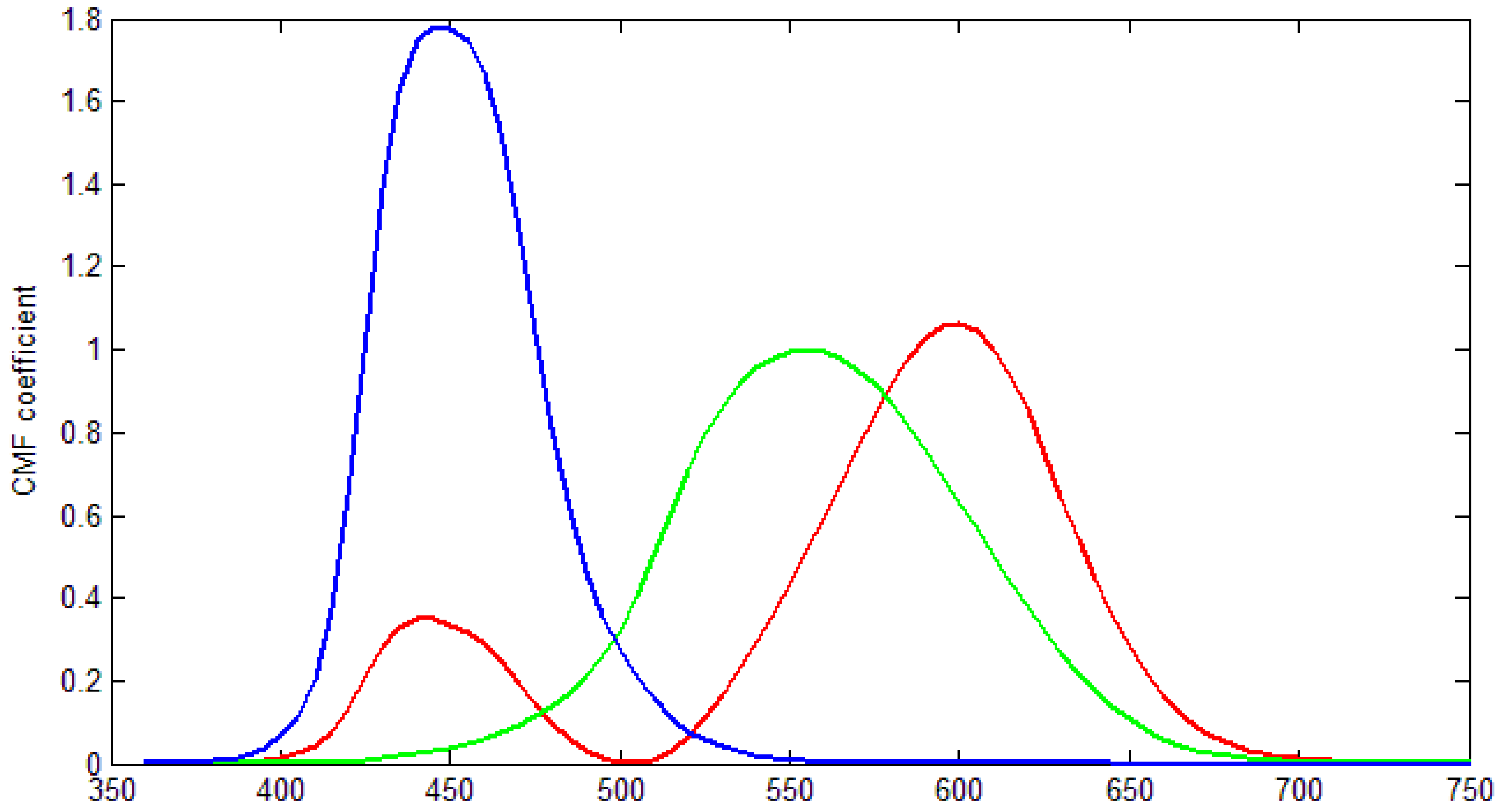
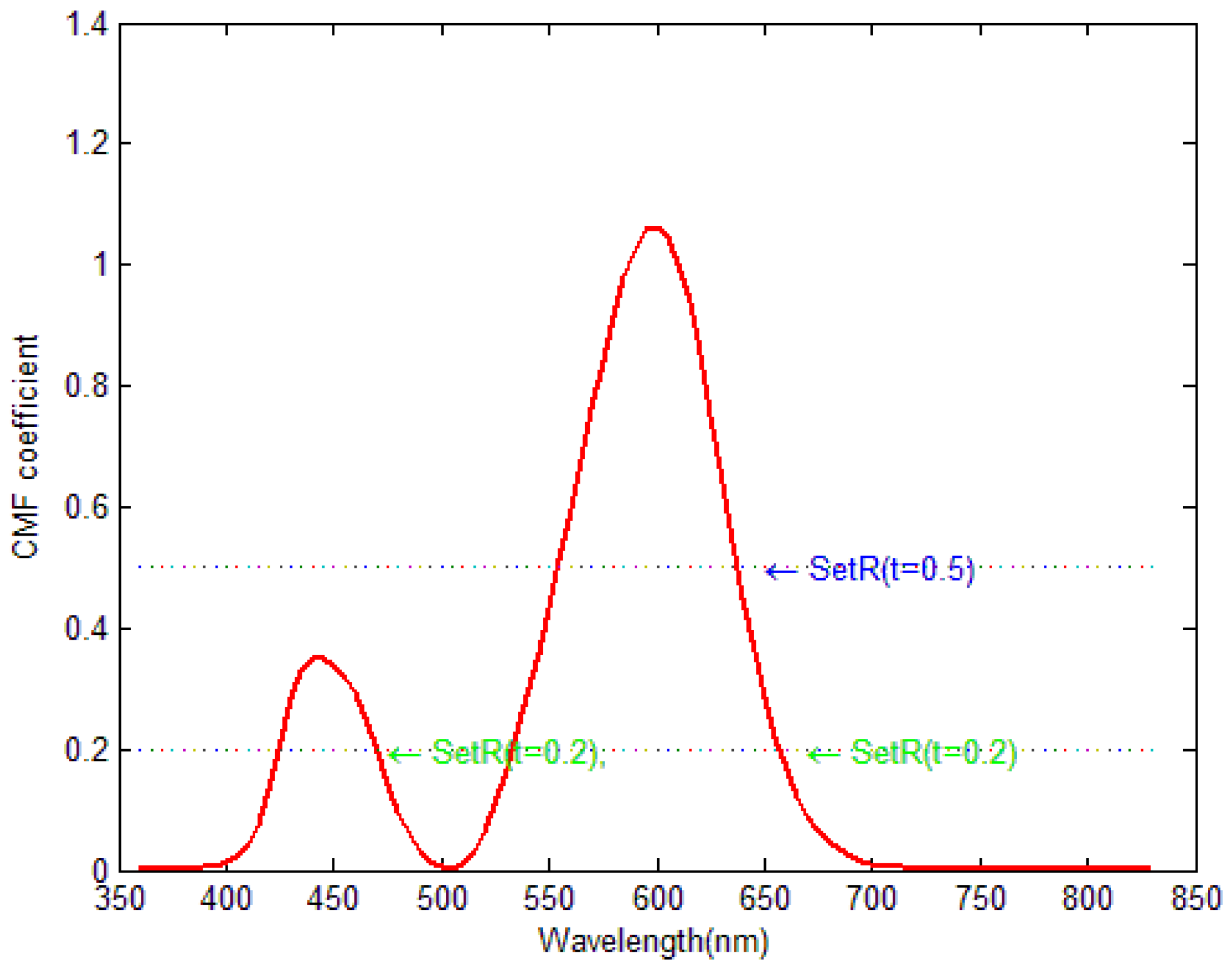

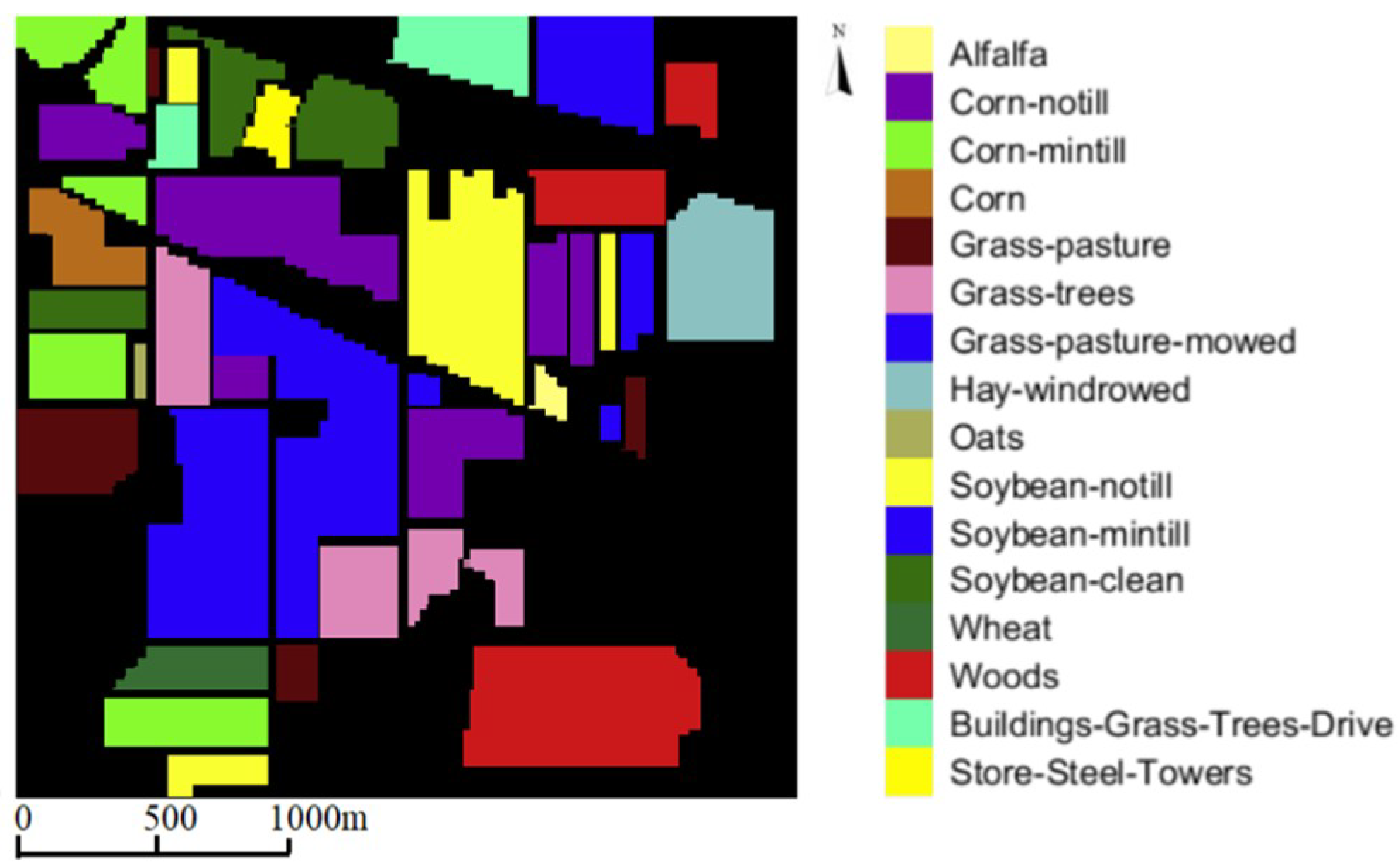
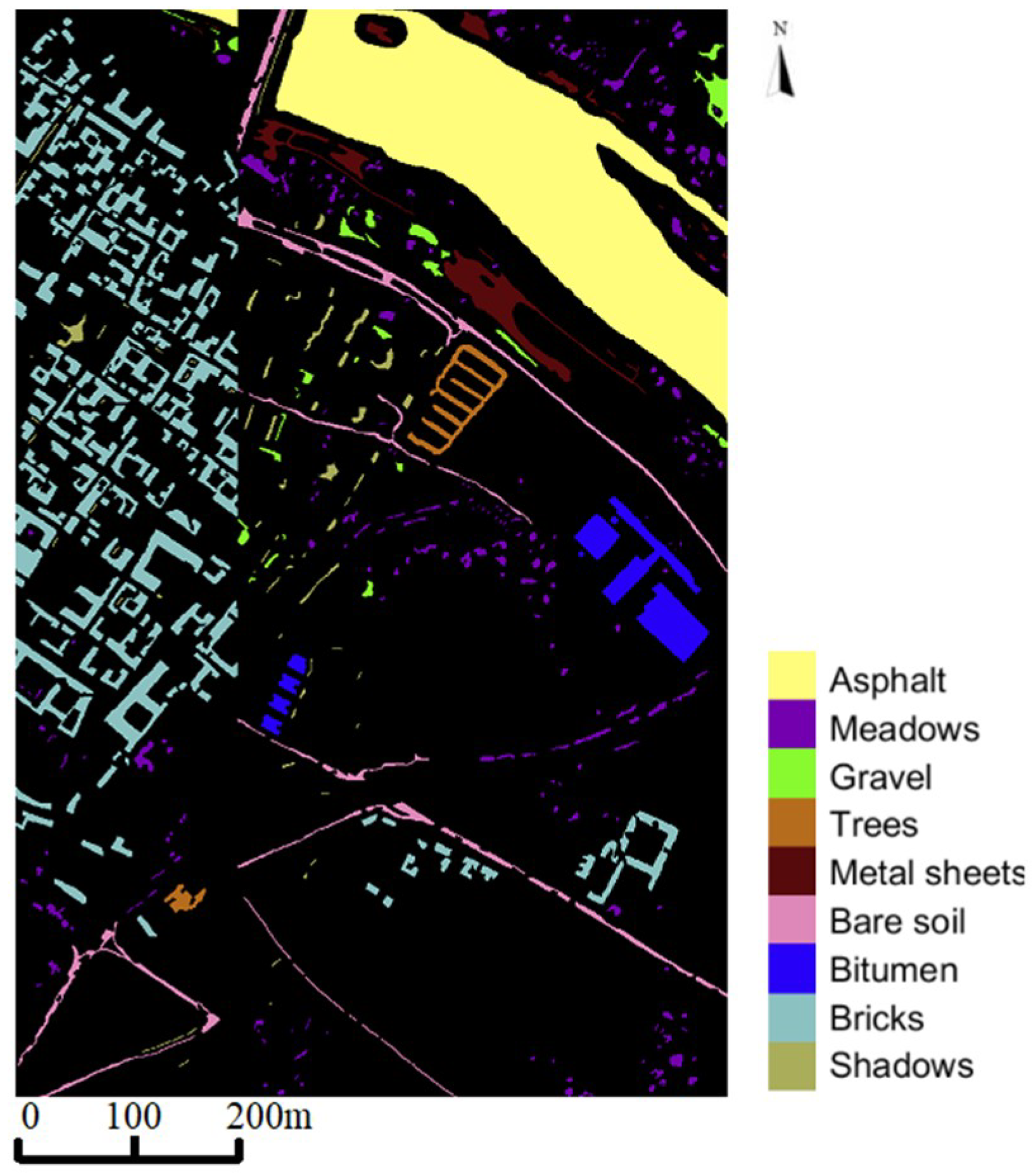
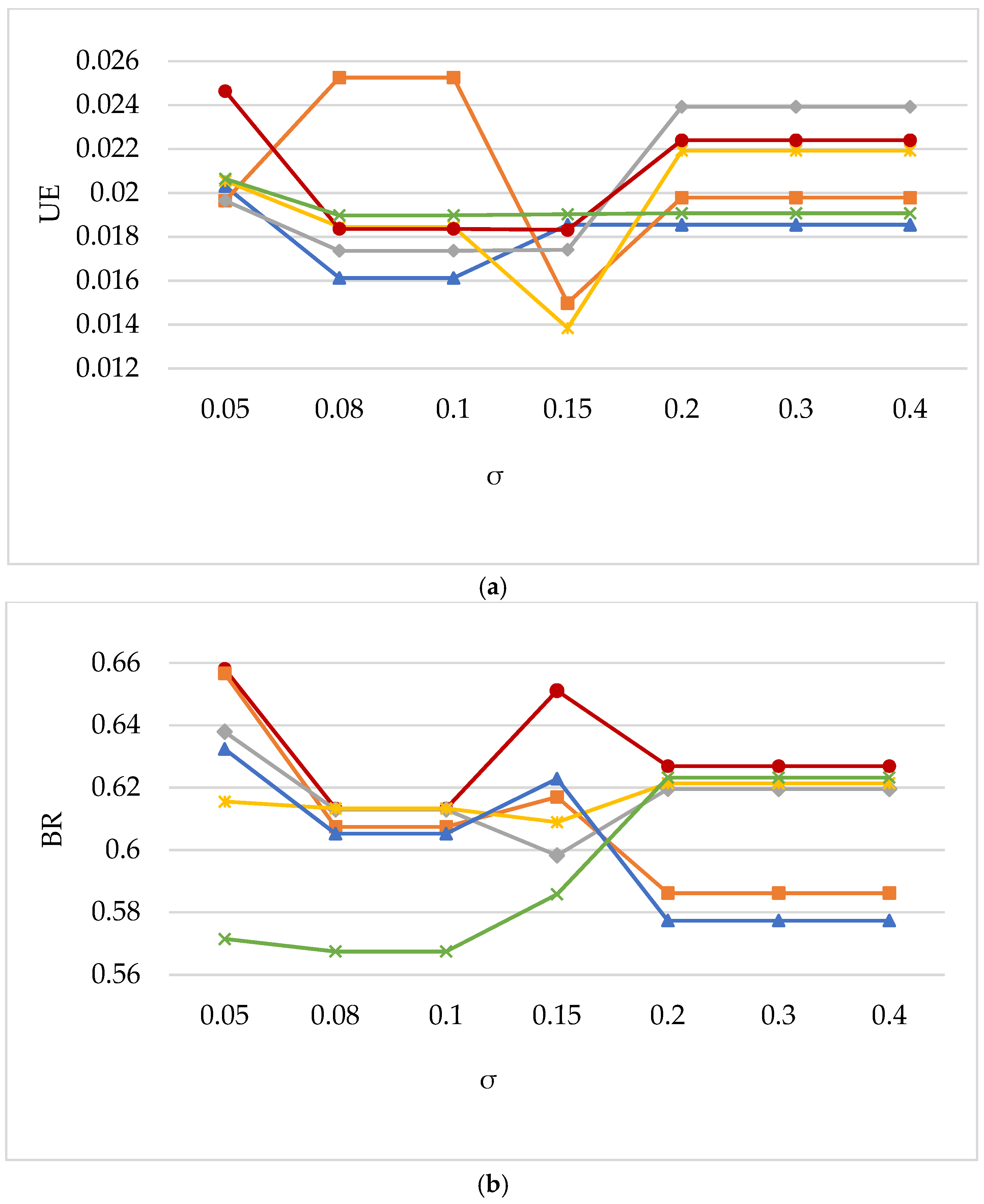


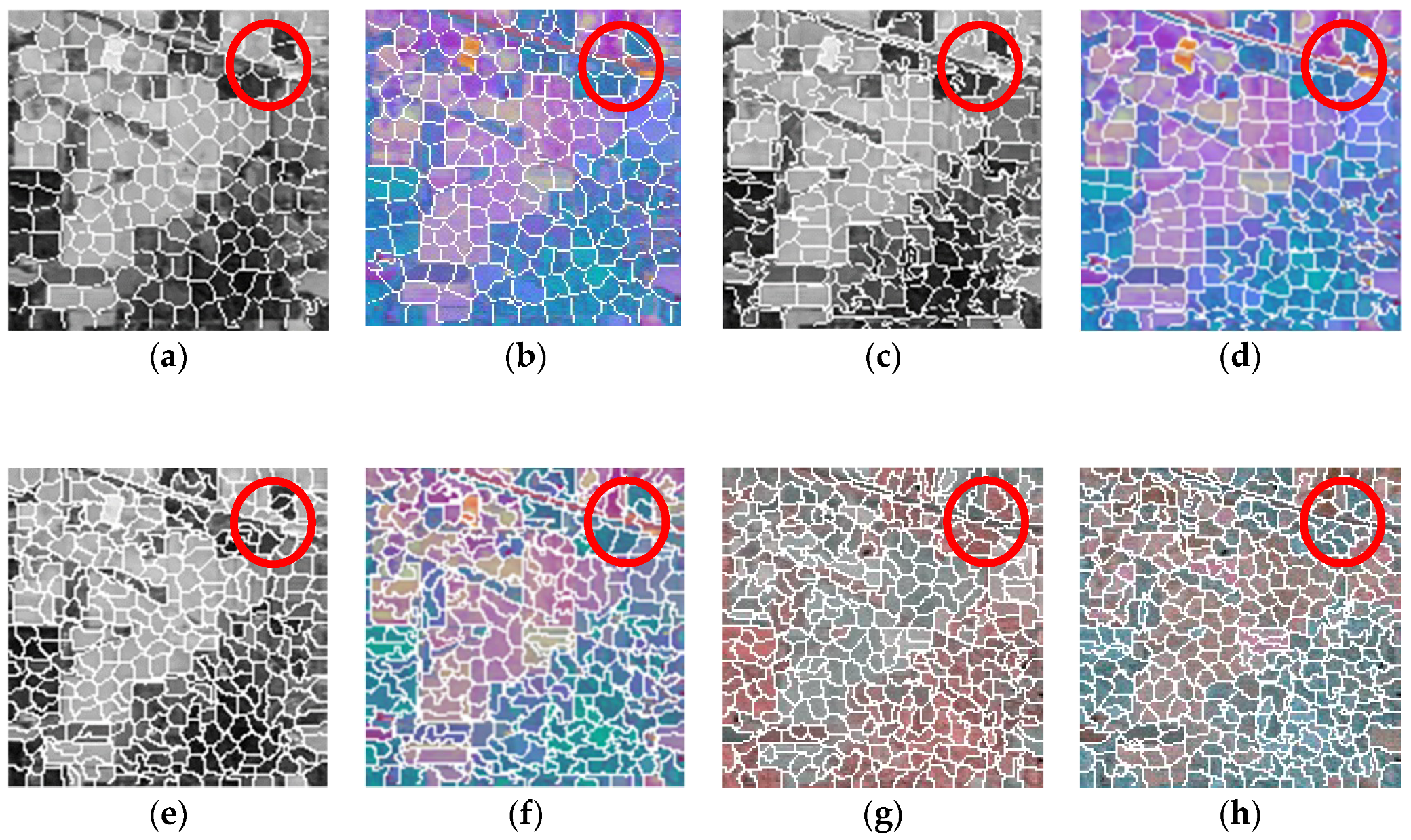
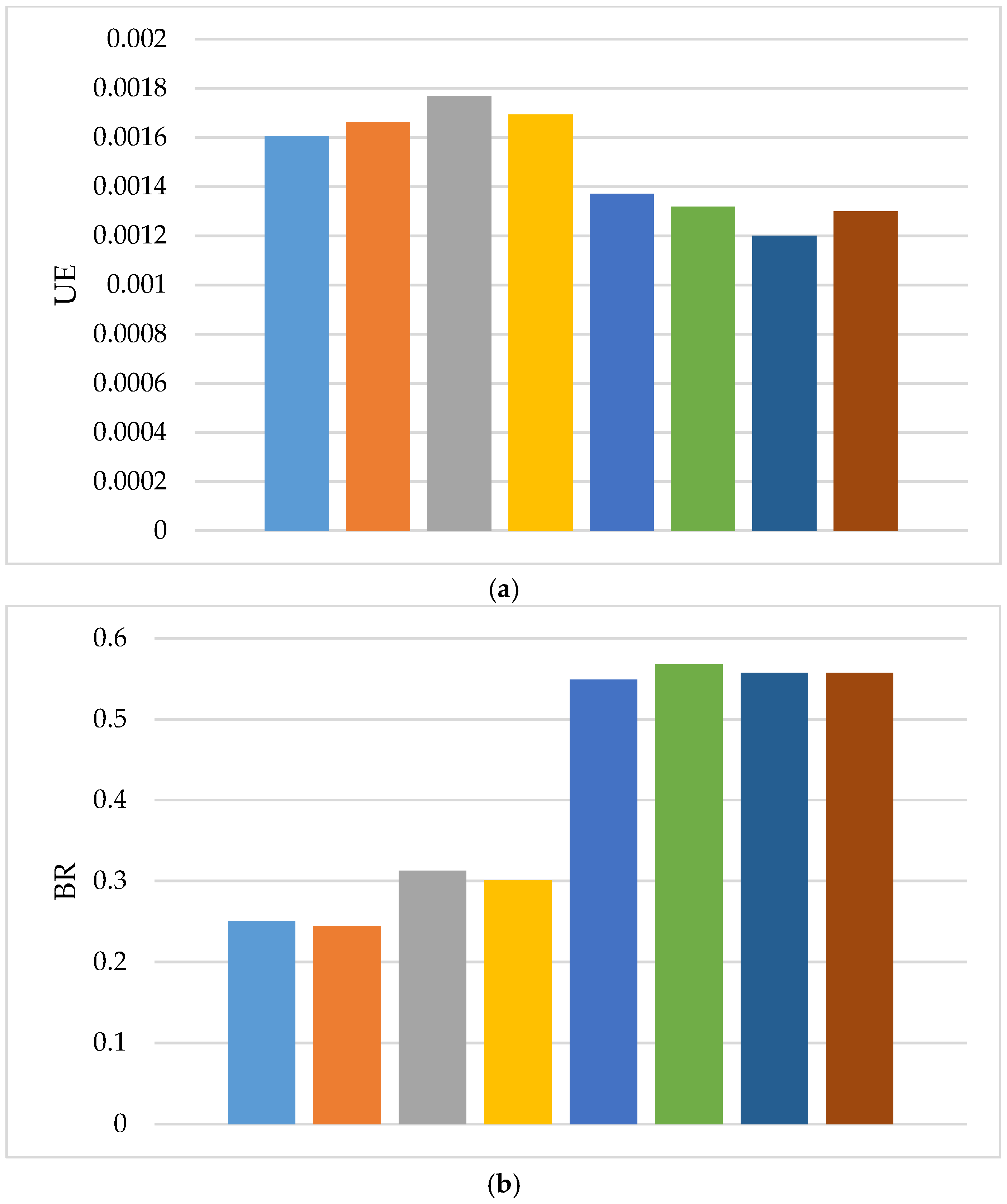
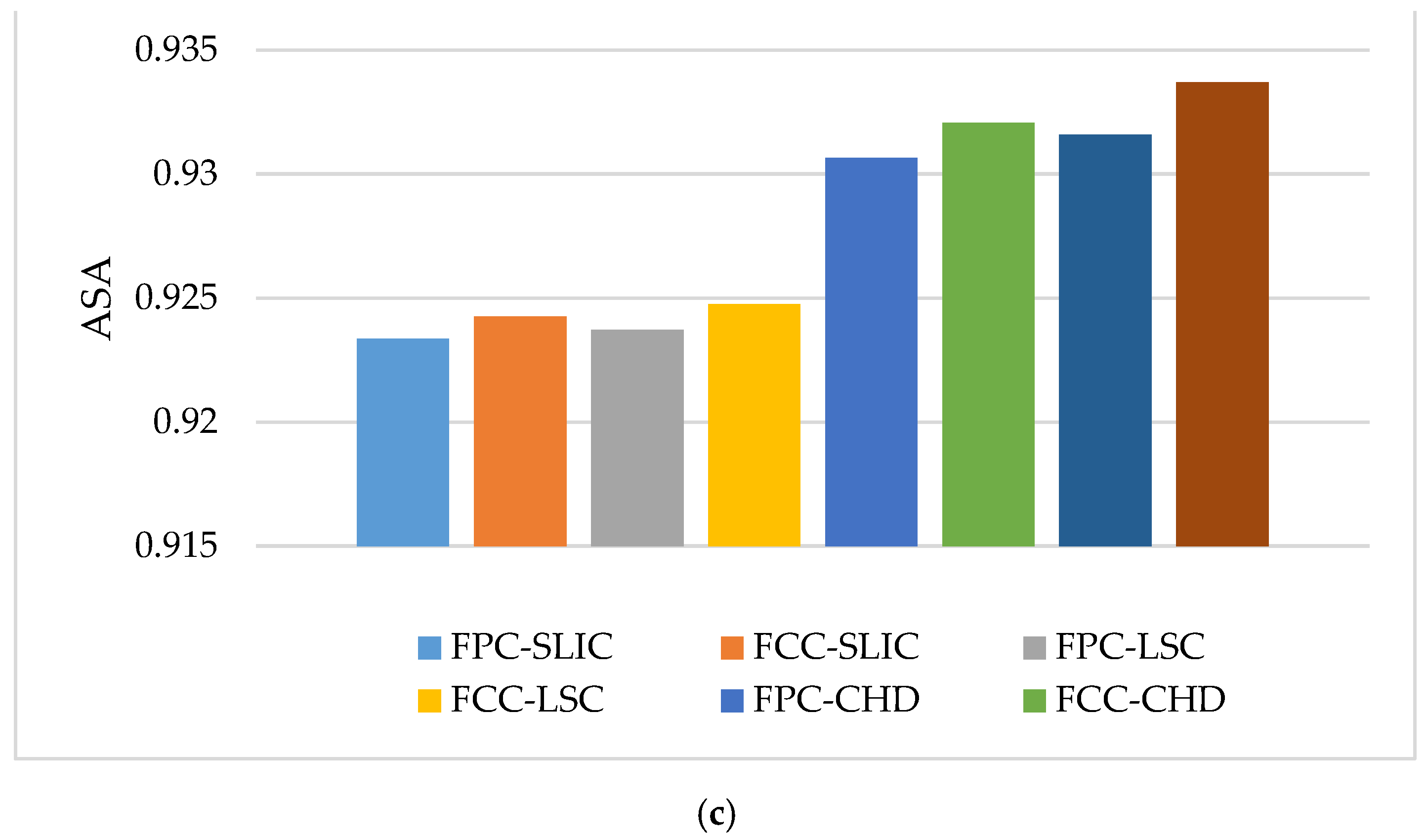
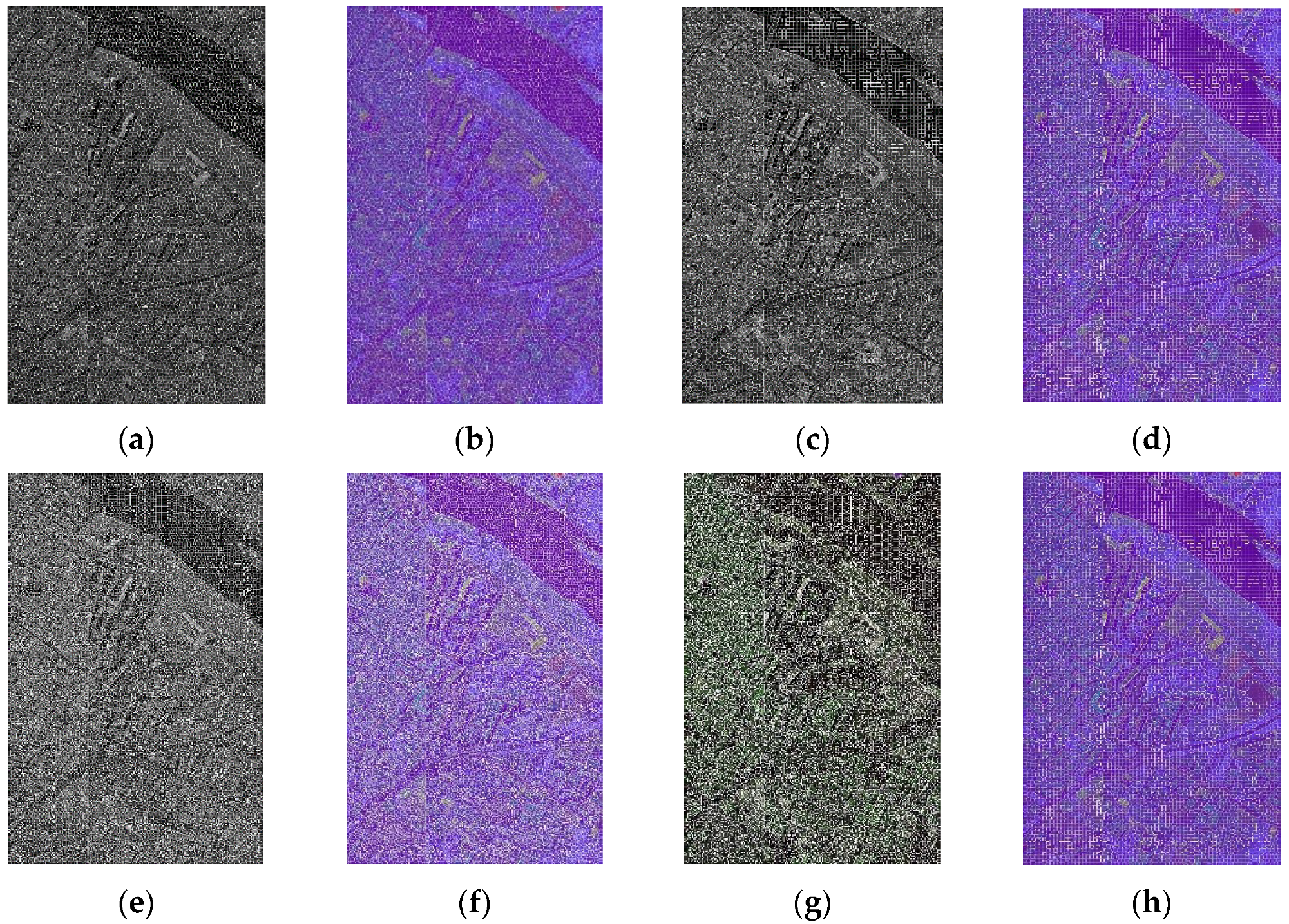
| 0.05 | 0.1 | 0.15 | 0.2 | 0.3 | 0.4 | |
|---|---|---|---|---|---|---|
| UE | 0.0203 | 0.0161 | 0.0149 | 0.0185 | 0.0185 | 0.0185 |
| BR | 0.6580 | 0.6132 | 0.6511 | 0.6268 | 0.6268 | 0.6268 |
| ASA | 0.8655 | 0.8408 | 0.8491 | 0.8350 | 0.8350 | 0.8350 |
| 5 | 9 | 11 | 14 | 17 | 20 | |
|---|---|---|---|---|---|---|
| UE | 0.0149 | 0.0156 | 0.0203 | 0.0203 | 0.0179 | 0.0203 |
| BR | 0.6511 | 0.6470 | 0.6580 | 0.6580 | 0.6580 | 0.6610 |
| ASA | 0.8491 | 0.8661 | 0.8408 | 0.8655 | 0.8655 | 0.8650 |
| Different Methods | FPC-SLIC | FCC-SLIC | FPC-LSC | FCC-LSC | FPC-CHD | FCC-CHD | CV-CHD | IM-CHD |
|---|---|---|---|---|---|---|---|---|
| UE | 0.0312 | 0.0276 | 0.0286 | 0.0311 | 0.0211 | 0.0187 | 0.0162 | 0.0149 |
| BR | 0.3415 | 0.3385 | 0.4873 | 0.4502 | 0.6378 | 0.6434 | 0.6026 | 0.6511 |
| ASA | 0.8241 | 0.8186 | 0.8505 | 0.8447 | 0.8628 | 0.8666 | 0.8524 | 0.8491 |
| Different Methods | FPC-SLIC | FCC-SLIC | FPC-LSC | FCC-LSC | FPC-CHD | FCC-CHD | CV-CHD | IM-CHD |
|---|---|---|---|---|---|---|---|---|
| UE | 0.0016 | 0.0016 | 0.0017 | 0.0016 | 0.0013 | 0.0013 | 0.0012 | 0.0013 |
| BR | 0.2507 | 0.2444 | 0.3127 | 0.3010 | 0.5487 | 0.5678 | 0.5572 | 0.5574 |
| ASA | 0.9233 | 0.9242 | 0.9237 | 0.9247 | 0.9306 | 0.9320 | 0.9315 | 0.9336 |
© 2020 by the authors. Licensee MDPI, Basel, Switzerland. This article is an open access article distributed under the terms and conditions of the Creative Commons Attribution (CC BY) license (http://creativecommons.org/licenses/by/4.0/).
Share and Cite
Lin, L.; Zhang, S. Superpixel Segmentation of Hyperspectral Images Based on Entropy and Mutual Information. Appl. Sci. 2020, 10, 1261. https://doi.org/10.3390/app10041261
Lin L, Zhang S. Superpixel Segmentation of Hyperspectral Images Based on Entropy and Mutual Information. Applied Sciences. 2020; 10(4):1261. https://doi.org/10.3390/app10041261
Chicago/Turabian StyleLin, Lianlei, and Shanshan Zhang. 2020. "Superpixel Segmentation of Hyperspectral Images Based on Entropy and Mutual Information" Applied Sciences 10, no. 4: 1261. https://doi.org/10.3390/app10041261
APA StyleLin, L., & Zhang, S. (2020). Superpixel Segmentation of Hyperspectral Images Based on Entropy and Mutual Information. Applied Sciences, 10(4), 1261. https://doi.org/10.3390/app10041261






